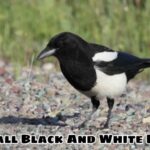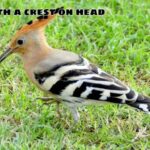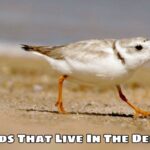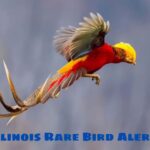Yellow birds in Kansas amid the state’s vast grassland and forest landscape. With their bright yellow plumage and cheerful song, they not only attract attention but also play an important role in the local ecosystem. These birds, from the Eastern goldenrod to the North American goldenrod, help maintain ecological balance by controlling pests and dispersing seeds.
Join Exoticbirdscorner explore the life of the Kansas Goldenrod to help us better understand the richness of the ecosystem as well as the conservation efforts needed to maintain the natural beauty of this land.
Introducing the golden bird
Definition and classification:
What are golden birds and which family of birds do they belong to?: Golden birds are a group of birds that stand out with bright yellow feathers, belonging to the Fringillidae family. They are often known for their unique beauty and richness of color.
Common goldenrods in North America: In North America, some common goldenrods include the North American goldenrod (Spinus tristis) and the Eastern goldenrod (Cardellina canadensis). These species are commonly seen in forest and park areas.
Comparison with similar birds: The golden chickadee can be compared to birds such as the golden thrush (Chloris chloris) and the golden thrush (Sturnella magna), especially in terms of color and shape, which helps distinguish them in nature.
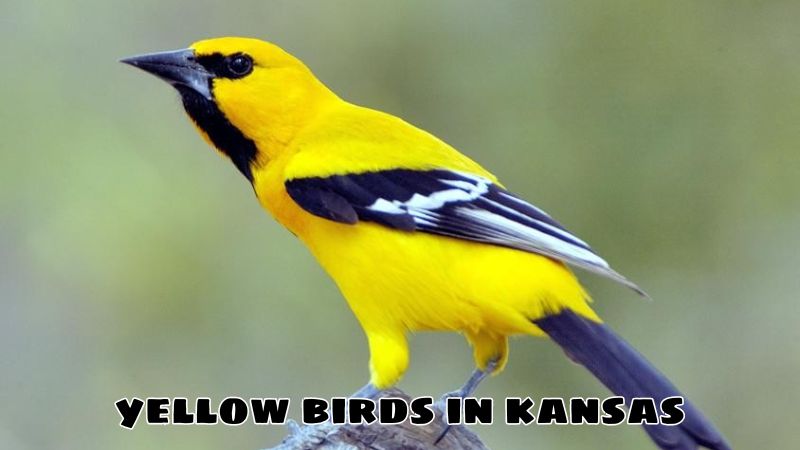
Outstanding features:
Appearance: Golden birds stand out with bright yellow plumage, usually small to medium in size. Their shape is usually neat with slightly pointed wings and tail.
Behavior: Golden birds have a very special way of living and feeding, often looking for food from tree seeds and insects. They nest in dense forest areas or bushes to protect the nest.
Sound: Yellowfinches are famous for their characteristic song, often a cheerful and recognizable sound, used to attract mates and mark territory.
Yellow birds in kansas
Kansas climate and terrain characteristics:
Climate: Kansas has a climate with four distinct seasons. Winters are often cold and dry, while summers are hot and sweltering. Temperature changes between seasons create diverse climatic conditions for animals, including goldenrod.
Terrain: Kansas is mostly plains, but also has low hills and mountains and many rivers and lakes. This diverse terrain provides many different types of habitat for goldenrods.
Areas where yellow birds often appear:
Forests and grasslands: Golden birds often inhabit forest and grassland areas, where they find food and shelter.
Areas near water sources: Areas near rivers, lakes, and other water sources are also places where golden birds often appear, because they need water to drink and search for food.
Nature preserves: Goldenbacks are also seen in Kansas nature preserves, which provide habitat that is protected and tailored to their needs.
Adaptation of the golden bird to the Kansas environment:
Foraging: Golden tits have developed the ability to forage effectively in the Kansas environment, often relying on tree seeds and insects available in grassland and forest areas.
Nesting: Yellowfinches nest in well-protected areas, such as bushes and tree branches, to adapt to harsh climatic conditions and protect the nest from adverse weather and predators.
The role of goldenrods in the Kansas ecosystem
Ecological balance:
What do golden birds eat?: Golden birds mainly eat seeds, fruits, and insects. Their diverse diet helps maintain ecological balance in their habitat.
Role in pest control: Golden birds play an important part in controlling pest populations, as they consume many types of harmful insects, helping to minimize the impact of pests on plants.
Impact on seed dispersal: By eating fruits and seeds, goldenrods play a role in seed dispersal, helping to disperse crops and maintain plant diversity in the areas they inhabit.
Environmental quality index:
What does the presence of golden birds indicate about the habitat?: The presence of golden birds is a positive sign of habitat quality. It shows that the environment provides adequate food sources, shelter and suitable living conditions for these birds, and reflects the health and stability of the local ecosystem.
Threats to goldenrods in Kansas
Loss of habitat:
Due to human activities: Urban development, infrastructure construction, and natural resource exploitation are reducing the area and quality of golden bird habitat.
Climate change: Changing climatic conditions, including changes in temperature and rainfall, affect the food sources and habitat of golden birds, making survival difficult.
Hunting:
Illegal hunting: Golden birds are often illegally hunted for entertainment or sample collection purposes, reducing their population numbers in the wild.
Wildlife trade: Illegal trade in wild animals, including golden birds, is a serious threat, causing them to be separated from their natural habitats.
Other factors:
Environmental pollution: Air and water pollution can negatively affect the health of goldenrods and their food sources, reducing their ability to survive.
Disease: Infectious diseases can spread rapidly in golden bird populations, causing population declines and affecting their survival.
Goldenbird conservation efforts in Kansas
Conservation organizations:
Organizations Working to Protect Goldenbirds: Many conservation organizations in Kansas, including nonprofit organizations and government agencies, are actively engaged in activities to protect and maintain the population. golden bird body.
Conservation activities:
Creating protected areas and reforestation: Conservation organizations are establishing nature reserves and implementing afforestation projects to provide safe habitat and protect resources for golden birds.
Research and monitoring of golden bird populations: Research and monitoring programs of golden bird populations help collect important data on their numbers, health status, and migration trends, from which to build effective conservation strategies.
Community education: Community education activities are implemented to raise awareness about the importance of protecting golden birds and encourage people’s participation in conservation efforts.
Epilogue
Kansas goldenrods are not only an important part of the ecosystem but also a symbol of nature’s beauty and diversity. With their essential role in maintaining ecological balance, from pest control to seed dispersal, they contribute significantly to habitat stability.
Despite facing many challenges such as habitat loss and climate change, conservation efforts from organizations and communities are helping to protect and maintain golden bird populations. Their presence not only enriches Kansas’ natural landscape but also emphasizes the importance of protecting habitat for future generations.


